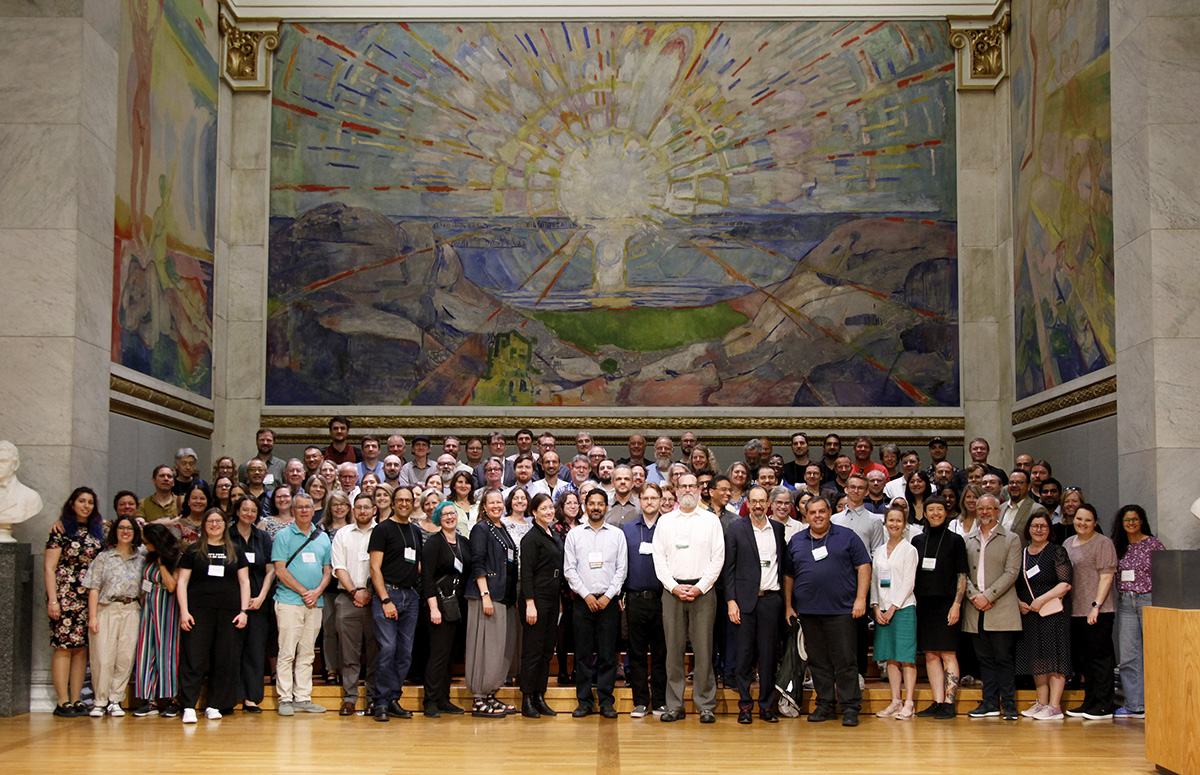Thanks for Attending Archiving 2023

Attendees in the University of Oslo Aula at Archiving 2023. Photo credit: Mogens Bech.
Archiving 2023: June 19-23
On this page
About the Archiving Conference
Since 2004, Archiving has been bringing together an international community of technical experts, managers, practitioners, and academics from cultural heritage institutions, universities, and commercial enterprises, to explore and discuss state-of-the-art imaging, digitization, preservation, and access for 2D, 3D, and AV materials, including documents, manuscripts, photographs, bound volumes, paintings, videos, and born-digital works.
The interdisciplinary focus of the conference creates a rich environment for information exchange. In addition to presenting the latest research results on digitization and curation, Archiving investigates new technologies, strategies, and policies, as well as reports on successful projects that can serve as benchmarks in the field and explores different platforms and ways of visualizing data, allowing for deeper connections with collections.
Archiving 2023 takes place in Oslo, Norway, the week of June 19-23, and will feature final presentations from the CHANGE—Cultural Heritage Analysis for New Generations—program.

2023 PROGRAM TOPICS
Digitization / Imaging
- New developments in digitization technologies and workflows
- Advanced imaging techniques and image processing, e.g., multispectral imaging, 3D imaging, software
- Large scale/mass digitization and workflow management systems
- Quality assurance and control of digitization workflow, e.g., data, targets, software, automation, integration
Preservation / Archiving
- Management of metadata; adapting to and crosswalking cataloging
- Archival and preservation models and workflows
- Emulation, containerization, and normalization
- Formats, specifications, and systems
- Computational techniques for analyzing and processing collections at scale
- Repository assessment; standards and guidelines for preservation processes, archiving methods, new ISO standards, adapting institutional processes to meet new external standards
- Email and web archiving
|
|
Access / Presentation
- Dissemination/use of digitized/imaged materials, e.g., rights management, crowdsourcing, data mining, data visualization
- Deep learning algorithms to improve search results; AI, machine learning, etc.
- Data visualization and automated programming interface (API) e.g. IIIF, Tableau, Storymaps
- Open access and open data strategies
- Integration of linked open [usable] data (LOD/LOUD)/Open source solutions
- New methods for storytelling
- Online exhibits and associated metadata
- Prototypes and work-in-progress
Management and Assessment
- Policies, strategies, plans, and risk management; repository assessment
- Work models: adaptation and opportunities in a hybrid model
|
All papers presented at Archiving 2023 are published Open Access.
Learn More: Archiving Webinars
View the recordings of webinars recorded in 2020 and 2021 that introduce the conference and its themes. These informative presentations serve as an introduction to the topics and understanding the contents and importance of the papers presented at this meeting.
- Digitization, Preservation, and Access: The Three Pillars of Cultural Heritage Archiving, Jeanine Nault, Smithsonian Institution View Recording
- Digitizing for Cultural Heritage: Imaging, Standards, and Quality, Peter Burns, Burns Digital Imaging View Recording
- Designing Preservation, Responding to Collection and User Community Needs, David Walls, US Government Publishing Office View Recording
- Access: Mind the Gap, Ariela Netiv, Heritage Leiden View Recording
- Imaging Choices: Practice, Settings, and Formats, Peter Burns, Burns Digital Imaging View Recording
- One Size Does Not Fit All: Workflows for Digitized and Born-Digital Materials, Kira Sobers and Lynda Schmitz Fuhrig, Smithsonian Libraries and Archives View Recording
- Covering the Gamut of Spectral Imaging: Intro to In-depth, Fenella France, Library of Congress, and David R. Wyble, Avian Rochester LLC View Recording
- OCR and Text Recognition: Workflows, Trends, and New Applications, Jack Maness, University of Denver; Jamie Rogers, Florida International University; and Luis J. Villanueva, Smithsonian Institution View Recording
Download Ariela Netiv's Resource List